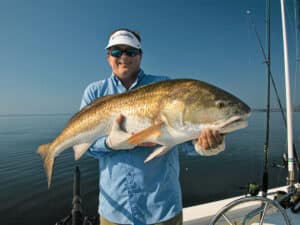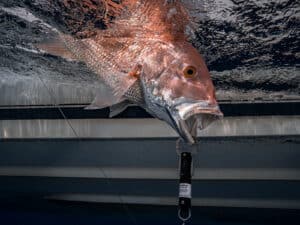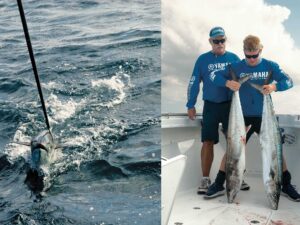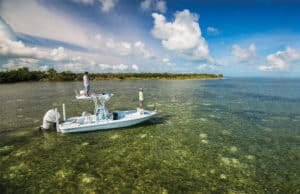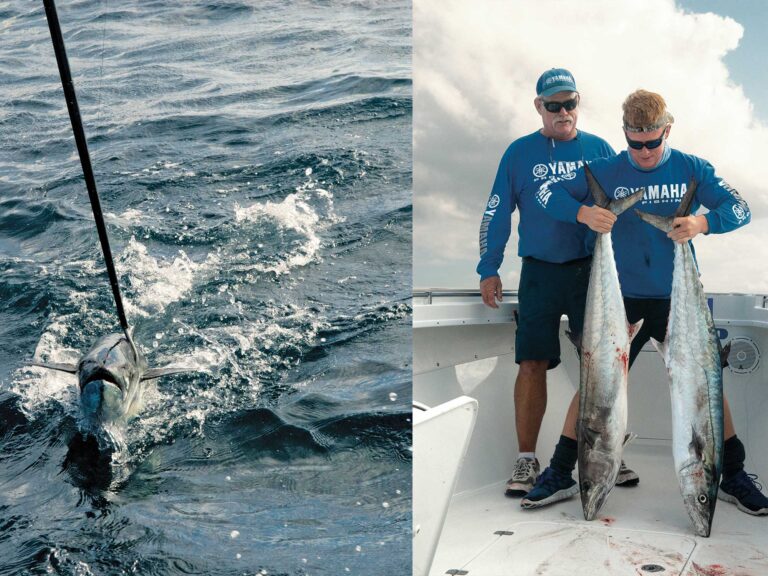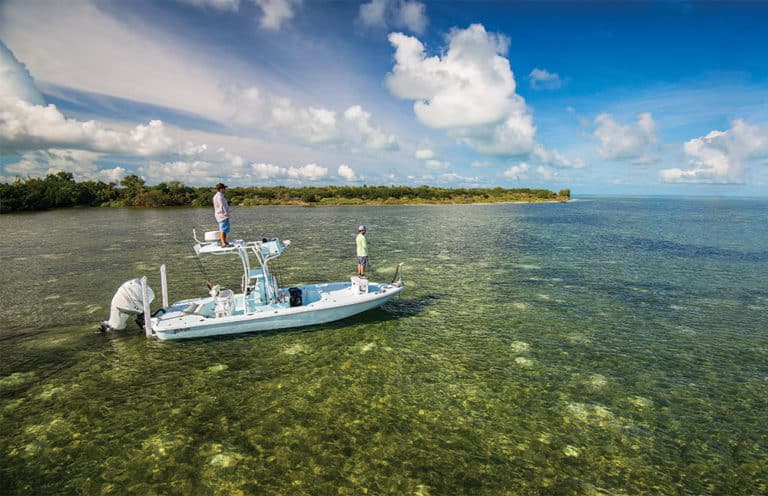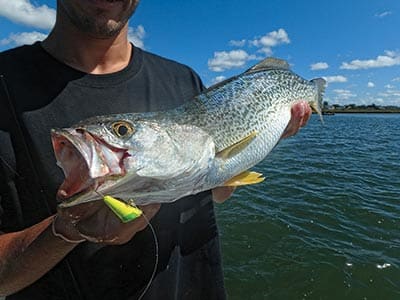Understanding the dynamics of saltwater fishing rods allows you to choose those that enhance your style of angling. Surprisingly, many anglers don’t understand the differences between rod actions and, subsequently, rarely purchase those best suited to their specific need, be it precision or distance casting, working swimming or topwater plugs, light or heavy jigging, trolling or deep-dropping.
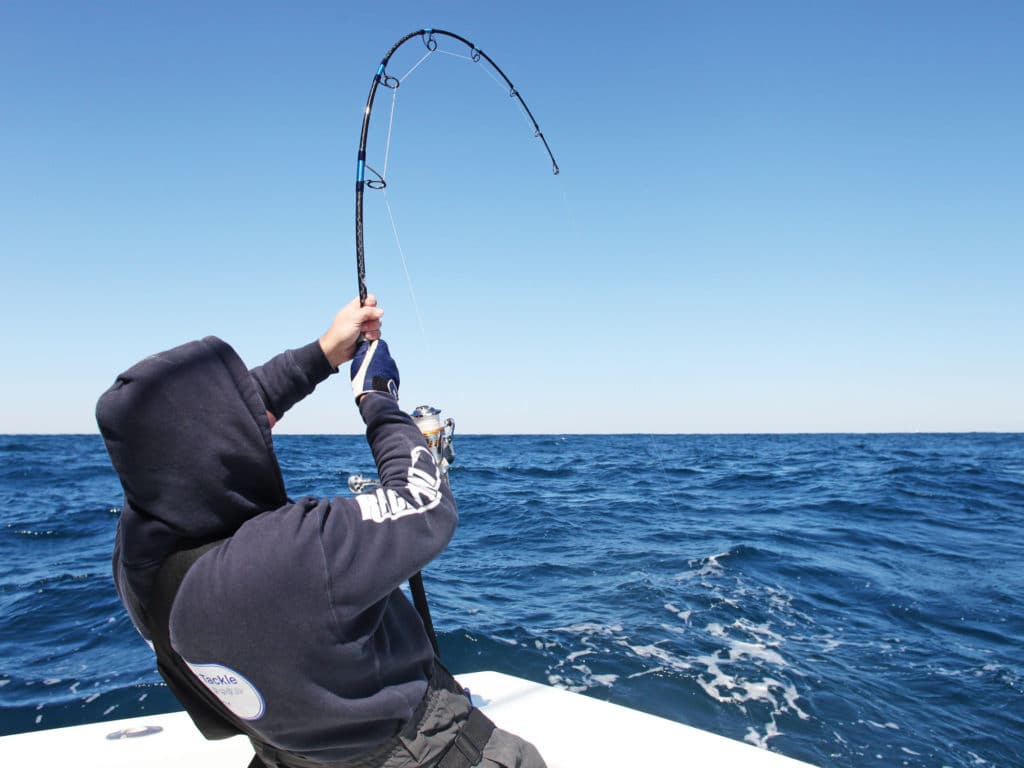
Types of Saltwater Fishing Rod Materials
How do you choose a saltwater fishing rod that best suits your needs? The first thing to consider is the material, whether that be fiberglass, graphite or new-generation composite:
FIBERGLASS: The most widely used saltwater fishing rod material, fiberglass is strong, durable and flexible. It’s able to withstand the abuse on boats and rough seas and is a tried and trusted general all-around rod material. Disadvantage: weight; it’s difficult for anglers to detect subtle strikes or bait pickups.
GRAPHITE: A performance-oriented material, graphite results in smaller diameters and lighter blanks that are highly sensitive and superb for detecting subtle pickups and strikes, as well as the feel of the fighting antics of different game fish. Disadvantage: brittle; nicks from banging around on a boat can weaken the blank, making it susceptible to breakage under pressure in that area.
NEW-GENERATION COMPOSITE: These new and powerful saltwater fishing poles pack a lot of punch in small-diameter and lightweight designs. They’re formulations of both fiberglass and graphite. In short, manufacturers are seeking the toughness and durability of fiberglass combined with the sensitivity and lightness of graphite. As a result, some of these top-quality rods are rated for up to 200-pound lines, yet they are the size of a 15- to 20-pound spinning or baitcasting rod.
The Action of the Fishing Rod
Factors, such as the blank material, wall thickness and length, contribute to a rod’s strength. However, the action — determined by how far down the blank (starting at the tip) the bend of the rod extends — is the primary contributor to a rod’s performance. In essence, rods with fast to extra-fast action are best suited for casting accuracy and solid hook-sets with large baits and lures intended for bigger fish. When you think of fast action, think of a stiffer rod with just bend at the tip. A medium to slow action is prime for extended casting distance, pitching live baits, and working smaller lures and baits. A slow action rod will have bend much farther down the length of the rod. Naturally, there are actions in between to help a rod excel in different specific situations.
A parabolic action, which loads up energy for longer casts, is often confused with fast and extra-fast actions, but it’s really the opposite. Under pressure, only the initial several inches of a fast-action rod bends. When only a short section of the rod tip bends while the rest of the blank remains firm, a rod lends itself to powerful hook-sets and has the muscle to stop, turn and heavily pressure a fish. Such rods shine when live-lining large baits, like menhaden, goggle-eyes, blue runners and herring, for the likes of big striped bass, amberjack, sailfish, big dolphin, tarpon, snook and cobia, as well as when jigging or chunking with sizable baits for many of the same species.
Best Fishing Rods for Casting
For casting accuracy, fast and extra-fast action rods provide more speed and power to pitch a lure to a target, thwarting any wind-related deviation. However, the fishing rod’s stiffness reduces casting distance, compared to medium and slow actions, unless heavy lures or baits are used. For example, I pair a large topwater chugger with a 7-foot, fast-action saltwater spinning rod when dolphin fishing. The weight of that large plug (1¼ ounces) allows me to achieve respectable casting distances while the rod’s fast action enables accurate presentations ideal for singling out a bigger dolphin in a school or pitching to the outskirts of working birds. Inshore, however, the loud sound of such a large lure landing could spook fish, yet a lighter rod with a fast or even a medium action affords me casting accuracy with more subtle baits.
In medium-action rods, the bend is a bit more pronounced than in fast-action models, generally extending from the tip to nearly midway down the blank, depending on the type of rod and the materials. And the bend is even more aggressive on slow-action rods.
As a general rule, the more pronounced the bend, the more energy the rod loads up. And that’s largely how casting distance is generated. Unfortunately, because of this “load up” and the lack of stiffness near the rod tip, casting accuracy suffers. Nevertheless, the softer deliveries of these two actions — or any combination of them — are preferred when pitching live baits from a distance to game fish, such as cobia, barracuda, tarpon, snook, red drum, schooling bluefish and striped bass, as baits are less likely to fly off the hook. In addition, medium to slow actions are excellent for light jigging and soaking bait for the aforementioned species, as well as fluke, blackfish, sea bass, and smaller grouper and snapper.
Medium to slow actions often promote better hook-sets, especially with lighter and smaller lures. With fast and extra-fast rods, anglers sometimes pull the lure away from a fish during the strike because of the rod’s stiffness. By comparison, that little bit of extra time, albeit brief, that it takes to come tight with a medium- to slow-action rod is often enough for a fish to fully engulf a lure, which in turn results in solid hookups. Plus, when playing a fish, the extra cushion provided by medium- to slow-action rods frequently prevents hooks from pulling or straightening, and lines from breaking during sudden surges or jumps and when applying heavy pressure.
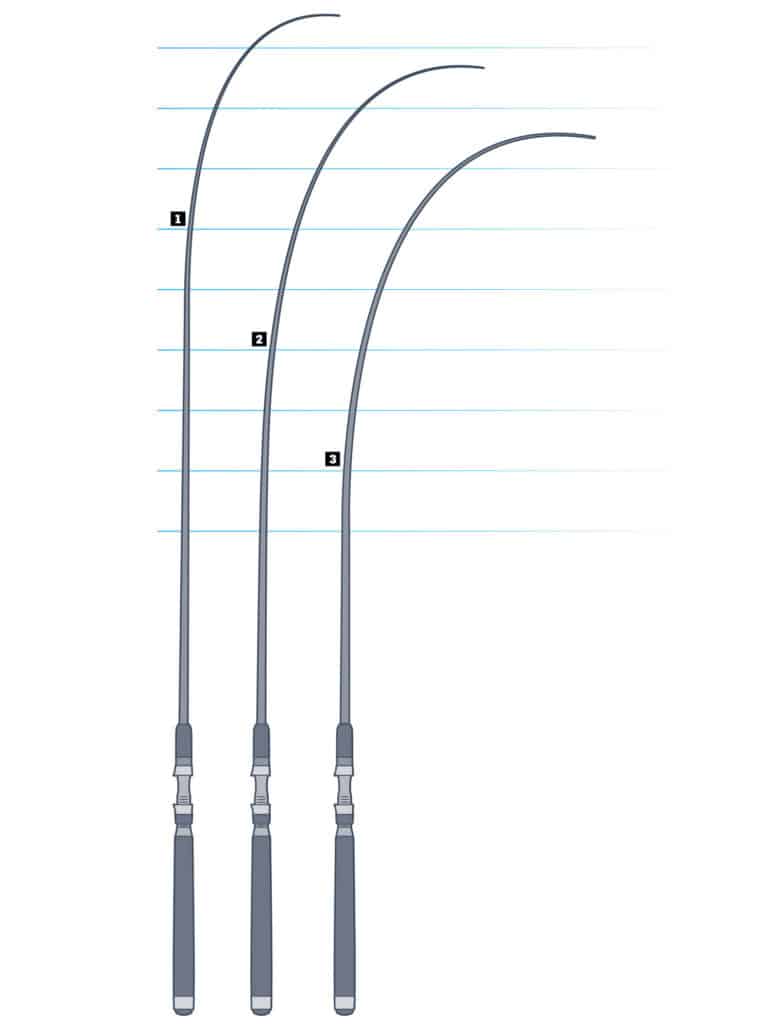
Most Powerful Fishing Rods
Rod power, not to be mistaken for rod action, is simply how powerful the blank is, and it is usually classified by the designated line strengths. For instance, heavy rods accommodate lines from 80- to 130-pound test, and, aside from being used to troll for marlin, large tuna and swordfish, they are often part of the new-generation composite spinning and jigging rods increasingly used to target yellowfin, school bluefin, and — more recently — swordfish.
At the opposite end of the spectrum, ultralight rods are for lines around 8-pound class most often used to tackle seatrout, red drum, striped bass, mackerel, bonito, schoolie dolphin and other small gamefish. When more leverage is required, there are light rods, generally designated for 10- to 20-pound lines, medium rods for 20- to 30-pound lines, and medium-heavy rods for 30- to 50- or even 80-pound lines. Note that these power designations can vary largely, depending on the rod manufacturer, materials and purpose (surf, inshore, jigging or trolling).
New-generation composite rods, considerably lighter and thinner than traditional rods, tend to have a greater range within each specific power rating. For instance, some of the heavy versions are designated for 130- to 200-pound lines.
Best Length of Fishing Rod
The proper combination of action and power should be determined by the strength of the line you plan to use and the type of fishing you are most likely to do with the rod. But when it comes to determining length, the main purpose of the rod is paramount. As a rule of thumb, longer rods increase casting distance, while shorter rods provide better leverage. So if you’ll primarily cast with 12- to 20-pound lines, consider a 7-foot, fast- to extra-fast-action rod for lures or live baits, or medium-action for smaller lures or natural baits. Likewise, a 7-foot, light to medium rod with a medium or fast action is a great choice for casting with 8- to 12-pound lines. And if you place a premium on casting distance, consider going up to a 7½-footer or longer.
When the need for power trumps casting distance, as is often the case when trolling or jigging, a shorter rod is a better choice. That’s why a number of rods designed for said tasks are 6 or 6½ feet long, and rods for stand-up fishing and many of the new-generation composite spinning and jigging rods are shorter still. Pick a 6-foot, medium-heavy rod with extra-fast action and you’ll have the upper hand on most things large and powerful with 50- to 100-pound lines.
It takes some thought to select the perfect rod for a specific situation; it isn’t just a matter of deciding which species of fish you plan to catch with it. Now that you know the key factors to take into account when choosing a rod, figure out the characteristics that offer the best combination and find the one that’s right for you.
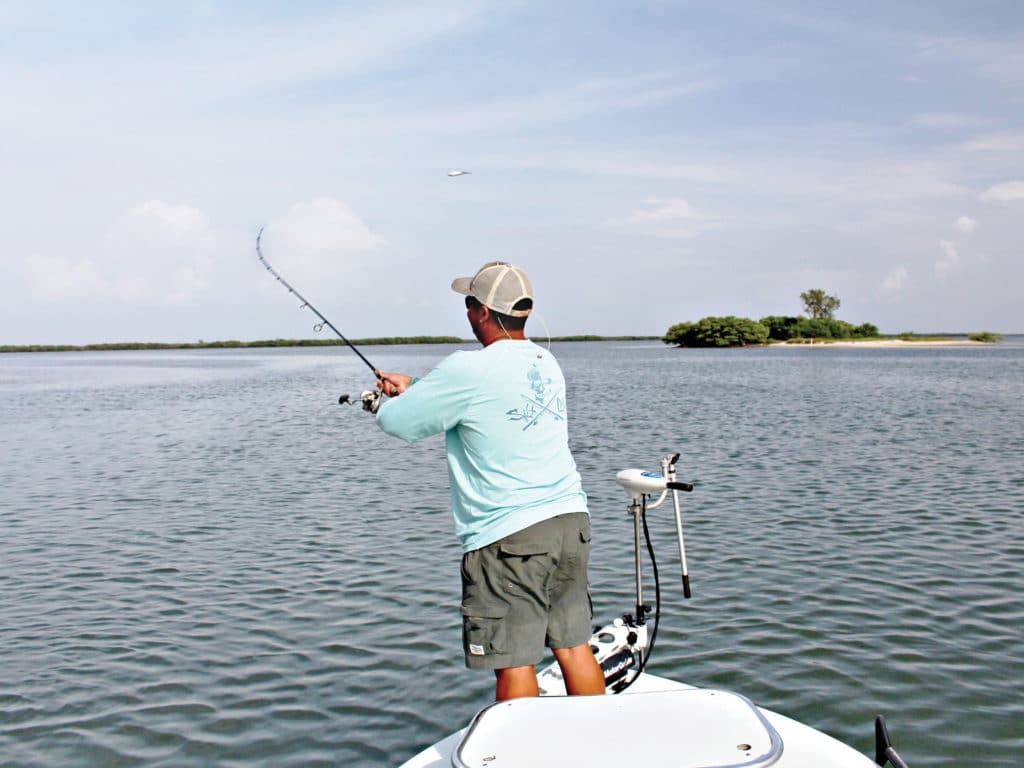
How to Take Care of Saltwater Fishing Rods
- Thoroughly rinse rods in fresh water, especially the guides and reel seats, and towel dry.
- Periodically remove the reels from the rods, and lubricate reel seats, fasteners and any roller guides.
- Check guides for pitting or corrosion and check the guide wraps for signs of wear.
- Pull a thin piece of sock through each guide to check for nicks. If the sock hangs, even slightly, a guide is damaged.
- Aboard a boat, rack rods where they won’t bang against hard surfaces or other rods in choppy seas.
- Modern rods have durable finishes. Apply a light coat of bowling-alley wax to help preserve that slick and polished look.

